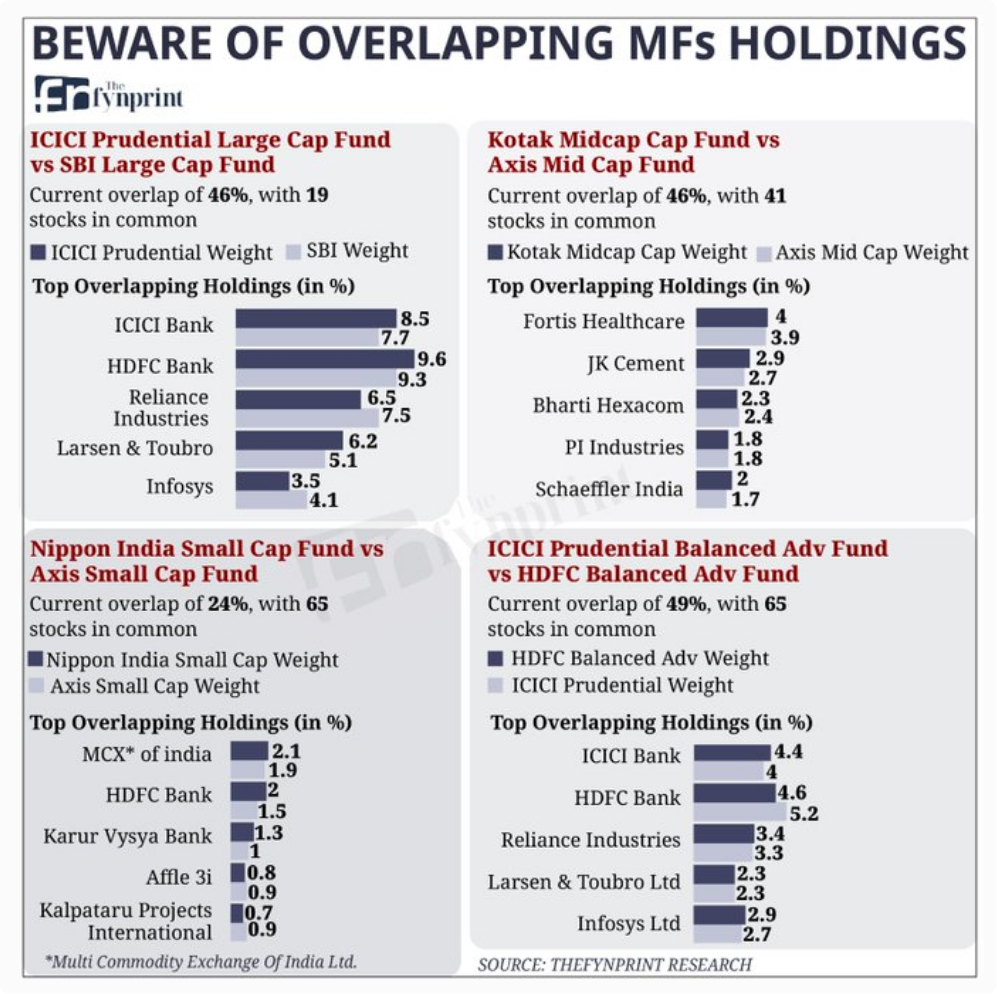Overlap in Popular Mutual Funds
Recent data shows that many popular mutual funds have a surprising amount of overlap in their holdings. For example, ICICI Prudential Large Cap Fund and SBI Large Cap Fund share 46% of their portfolios with 19 common stocks. Similarly, Kotak Mid Cap and Axis Mid Cap also have a 46% overlap, holding 41 of the same stocks.

Even balanced funds like ICICI Prudential Balanced Advantage and HDFC Balanced Advantage show about 49% overlap. This means that many funds, though managed by different companies, are often investing in the same set of stocks.
Why Overlap Reduces Diversification
Many investors believe that spreading money across multiple funds from different companies gives them better diversification. However, when these funds hold many of the same stocks, the expected diversification does not really happen. You might think your portfolio is well balanced, but in reality, your exposure could be concentrated in the same companies. This increases your risk if those common stocks perform poorly.
The Same Issue Exists Beyond Mutual Funds
This issue is not limited to mutual funds. The same overlap can also be seen in smallcases and PMS (Portfolio Management Services). These investment options often pick from the same set of leading companies or sectors. So even if you choose different strategies or platforms, there is a high chance that your money is going into the same stocks through different routes.
Why You Should Check Fund Holdings Carefully
Before investing, it is very important to check what your fund or strategy actually holds. Look for how many stocks are common between your chosen funds. If you find that two funds have a high overlap, it means they are not really helping you spread your risk. In such cases, you can choose to keep only one of them and find another fund that invests in different sectors or stocks to improve your diversification.
Smart Diversification Is About Awareness
Diversification works only when your investments are spread across different kinds of assets and companies. Blindly adding more funds without checking overlap may make your portfolio look big, but it won’t protect you during market swings. Understanding what your funds hold and making sure they truly complement each other is the real key to smart investing.










